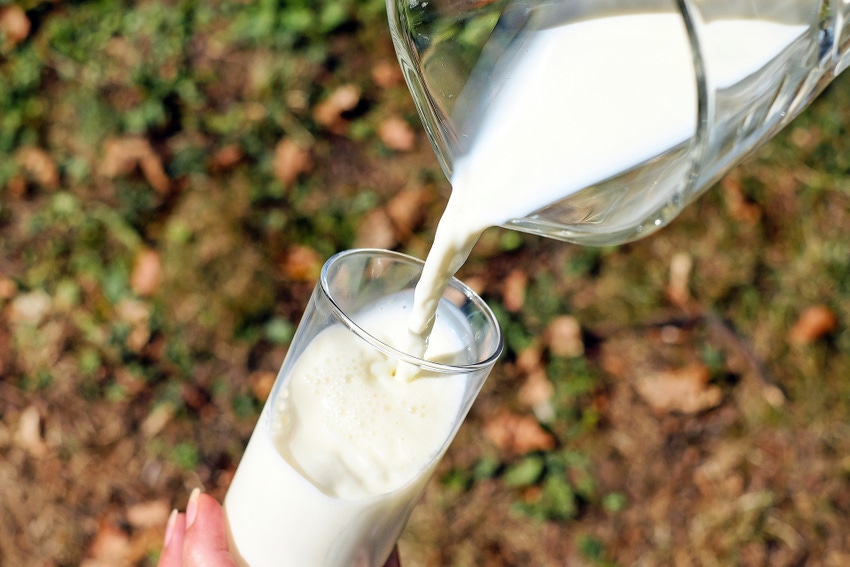U.S. dairy industry investment in milkfat research moving the needle.

Click here for related audio interview.
The discussion surrounding the benefits of consuming whole milk dairy is not a new one, and although there is much work to be done still, dairy farmers' investment in research is showing progress on changing the dialogue.
“The story of milkfats is really interesting,” said Dr. Greg Miller, global chief science officer of the National Dairy Council (NDC). “There isn’t a meeting that I show up at without farmers coming up to ask, ‘Greg, what’s going on with milkfat research?’”
Miller said it’s a bit of a complicated story, but by investing in research, the dairy sector is looking for opportunities to sell more dairy products and increase consumption or how to remove barriers that reduce consumption.
One recent opportunity for the dairy industry was flavored milk as a recovery drink, Miller said.
“Over a series of a few years, we built a body of research that showed that milk -- particularly flavored milk -- is a great recovery beverage after working out. Now, we see that flavored milk is in almost every locker room across the country, and flavored milk sales are doing pretty well,” Miller said.
That doesn’t happen without dairy farmer investment in research, he noted, adding, “If dairy farmers weren’t investing in research, I don’t think there’d be anybody else that would fund that type of research.”
A barrier for the industry is the perception of milkfat, according to Miller. Consumers have been concerned about milkfat based on what health and nutrition professionals were telling them about saturated fats. However, Miller said many dairy farmers were vocal that there is something different about milkfat, “so many years ago, we started investing in research to look at what is unique about milkfat. Is whole milk dairy different than saturated fat coming from other sources?”
Miller said the industry also responded to the challenge by creating fat-free, 1%, 2% and traditional whole milk products, but it still felt that there was more work to be done.
“Lo and behold, what we’ve found over the years is that dairy products are really — regardless of fat levels — providing health benefits,” he said. “We see that people who consumer adequate amounts of dairy — three servings a day versus one or less — have better bone health, have better heart health, have better bodyweight and body composition, have lower risk of stroke, have better blood pressure, and now we’re seeing it is associated with reduced risk of type 2 diabetes as well.”
At any fat level, Miller said there are benefits to dairy consumption in terms of reduced risk of chronic diseases. Further, he pointed out that the U.S. dietary guidelines have indicated that consumption of dairy foods reduces the risk for some of the aforementioned health issues — “so really good news for us.”
From there, Miller said the industry had to begin to differentiate whole milk dairy from the low-fat and fat-free versions, because the Dietary Guidelines for Americans, the basis of all federal food policy, influence what can be sold in schools, what can be sold in certain feeding programs what can be stated about dairy foods.
The dietary guidelines still recommend low-fat and fat-free dairy, and the obesity epidemic in the U.S. also caused a push for reduced-fat or fat-free food recommendations, Miller noted.
“So, we have to differentiate milkfat to show that there is some benefit to milkfat consumption before dietary guidelines are going to change. That’s the research we’ve been funding over the last five or six years,” he said, adding that there is a growing consensus in the health and nutrition community that whole milk is beneficial.
Work to update the U.S. Dietary Guidelines for Americans is underway for 2020, so it will be important to be a resource in the process, Miller said.
“I’m really excited about the work that we’re investing in. I think we have really changed the knowledge out there,” he said. “The good news is that consumers and others hear that science and adopt it much more quickly than some of the science and health professionals do.”
Miller noted that the U.S. has been talking about saturated fat and milkfat for probably more than 50 years, which means “we’re trying to undo 50 years' worth of dogma that’s been out there. I do feel like we’ve turned the corner. We’re seeing whole milk now being recommend by health professional organizations; we’re seeing it in health professional newsletters.”
The progress made probably wouldn’t have happened without the investment of dairy farmers, he said, emphasizing, “I really value and appreciate dairy farmers and their willingness to investment in research.”
About the Author(s)
You May Also Like





